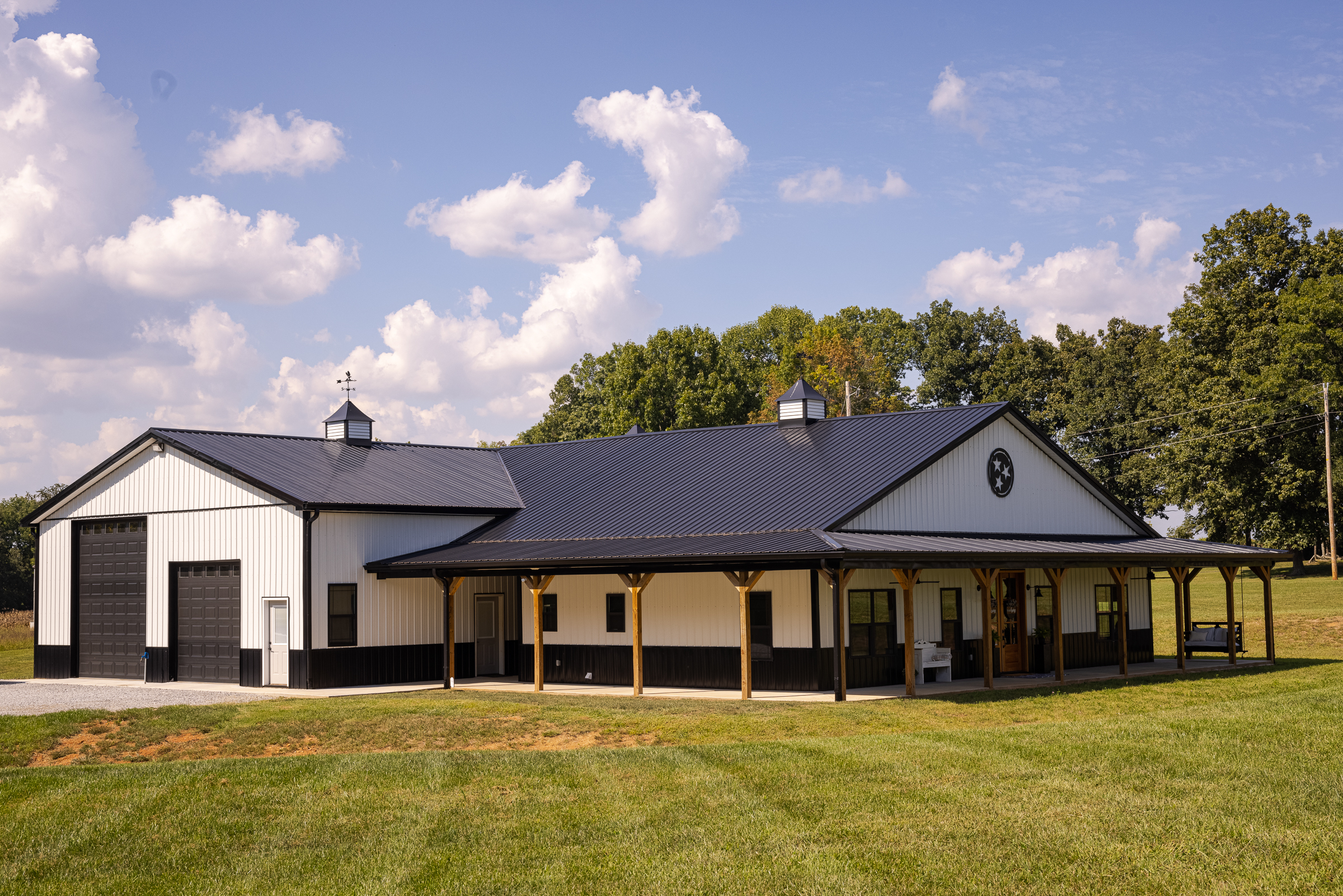Barndominium Repair Providers: Top Quality Upkeep and Reconstruction
Barndominium Repair Providers: Top Quality Upkeep and Reconstruction
Blog Article
Barndominiums Vs. Traditional Houses: a Detailed Comparison of Way Of Living and Functionality
The choice in between barndominiums and typical homes encompasses numerous variables, consisting of way of living choices and useful demands. Barndominiums are defined by their open designs and versatility, commonly appealing to those that prioritize communal living and flexibility.
Overview of Barndominiums
Barndominiums, a novel real estate trend obtaining popularity throughout numerous regions, mix the rustic charm of barn-style design with the functionality of contemporary home. These distinct frameworks generally are composed of a steel or wood structure, incorporating open layout and high ceilings with energy-efficient attributes. Often located on large country buildings, barndominiums offer house owners the possibility to enjoy a peaceful way of life while giving ample space for different activities.
The adaptability of barndominiums expands past their aesthetic appeal; they can work as both living quarters and functional areas for pastimes, workshops, or also local business. Their flexible layout enables easy customization, accommodating diverse family needs and preferences. Many owners appreciate the reduced upkeep needs linked with steel home siding and roof, adding to long-lasting toughness.

Qualities of Traditional Homes
Highlighting ageless style and convenience, standard homes are identified by their distinct architectural designs, which frequently show historic impacts and local aesthetic appeals. Usual functions consist of symmetrical facades, gabled roofing systems, and a focus on workmanship, causing a cozy and welcoming atmosphere.
Conventional homes commonly include components such as crown molding, wainscoting, and wood floor covering, enhancing their classic appeal. They usually feature multiple rooms with defined purposes, promoting family interaction while permitting privacy. visit website. The format often consists of official living and eating locations, which contribute to amusing guests and organizing family gatherings
Exterior products such as block, timber, or stone are frequently used, adding to durability and a feeling of durability. Barndominium repair. Furthermore, numerous traditional homes are designed with front verandas or stoops, cultivating a sense of community and link with the community
Landscaping plays a significant duty in standard home style, with well-maintained yards and pathways that enhance aesthetic charm - click here to view. Generally, conventional homes embody a feeling of nostalgia and security, attracting those who value heritage and a much more structured living setting
Cost Contrast
Usually, a cost contrast between barndominiums and typical homes reveals substantial differences in building and construction costs and total investment. Barndominiums, usually built from steel or steel frames, commonly incur reduced material and labor expenses than typical homes developed from timber and brick. The simplified layout of barndominiums can translate to minimized construction times, even more lowering labor costs and accelerating tenancy.
Usually, the expense per square foot for a barndominium varies from $100 to $150, while traditional homes can vary commonly, commonly falling between $150 and $300 per square foot, see this depending upon place, products, and layout complexity. This expense variation makes barndominiums an eye-catching option for budget-conscious buyers seeking larger home without giving up top quality.
Additionally, barndominiums may result in long-lasting financial savings via reduced upkeep prices, power performance, and insurance rates. Their durable building materials frequently need less upkeep in time compared to conventional homes. Nevertheless, it is necessary to think about that while preliminary expenses may be lower for barndominiums, the final financial investment will also depend on individual customization and desired amenities, which can affect the overall expenditure in both housing kinds.
Lifestyle and Area Factors To Consider
When thinking about way of living and space, barndominiums use a special versatility that charms to a variety of homeowners. These hybrid structures incorporate property dealing with practical room, typically featuring open layout that can be adapted to suit specific needs. This flexibility is especially beneficial for families or people seeking a tailored living atmosphere, permitting varied uses such as home workplaces, workshops, or recreational areas.

Furthermore, the visual charm of barndominiums can deal with both rustic and contemporary tastes, making them a flexible selection for different layout choices (Barndominium repair). Eventually, the selection in between a barndominium and a typical home usually hinges on exactly how well each alternative lines up with the home owner's lifestyle aspirations and spatial requirements, highlighting the significance of taking into consideration individual concerns in the decision-making procedure
Ecological Impact and Sustainability
The environmental impact and sustainability of barndominiums existing compelling benefits contrasted to typical homes. Largely constructed from steel and various other long lasting products, barndominiums are usually constructed using recycled resources, reducing the demand for new products and decreasing waste. Their style normally emphasizes open spaces, which can result in reduced energy usage for cooling and heating compared to traditional homes with even more segmented layouts.
Additionally, barndominiums can incorporate sustainable functions such as photovoltaic panels, rainwater harvesting systems, and progressed insulation techniques, improving their energy efficiency. The convenience of their layout permits homeowners to integrate these technologies a lot more effortlessly than in several traditional homes, which may call for extensive retrofitting.
Furthermore, barndominiums frequently call for fewer sources for building and construction due to their easier, extra efficient layouts (read more). In general, barndominiums stand for a forward-thinking approach to lasting living, straightening with contemporary environmental top priorities.
Verdict
In recap, the selection in between barndominiums and traditional homes depends upon individual way of living preferences and useful needs. Barndominiums, with their open designs and lasting products, accommodate those looking for flexibility and common living. Conversely, typical homes offer defined rooms that enhance personal privacy and maintain historical aesthetics. Each choice offers unique advantages, necessitating cautious consideration of one's values and needs when determining one of the most appropriate living setting.
Report this page